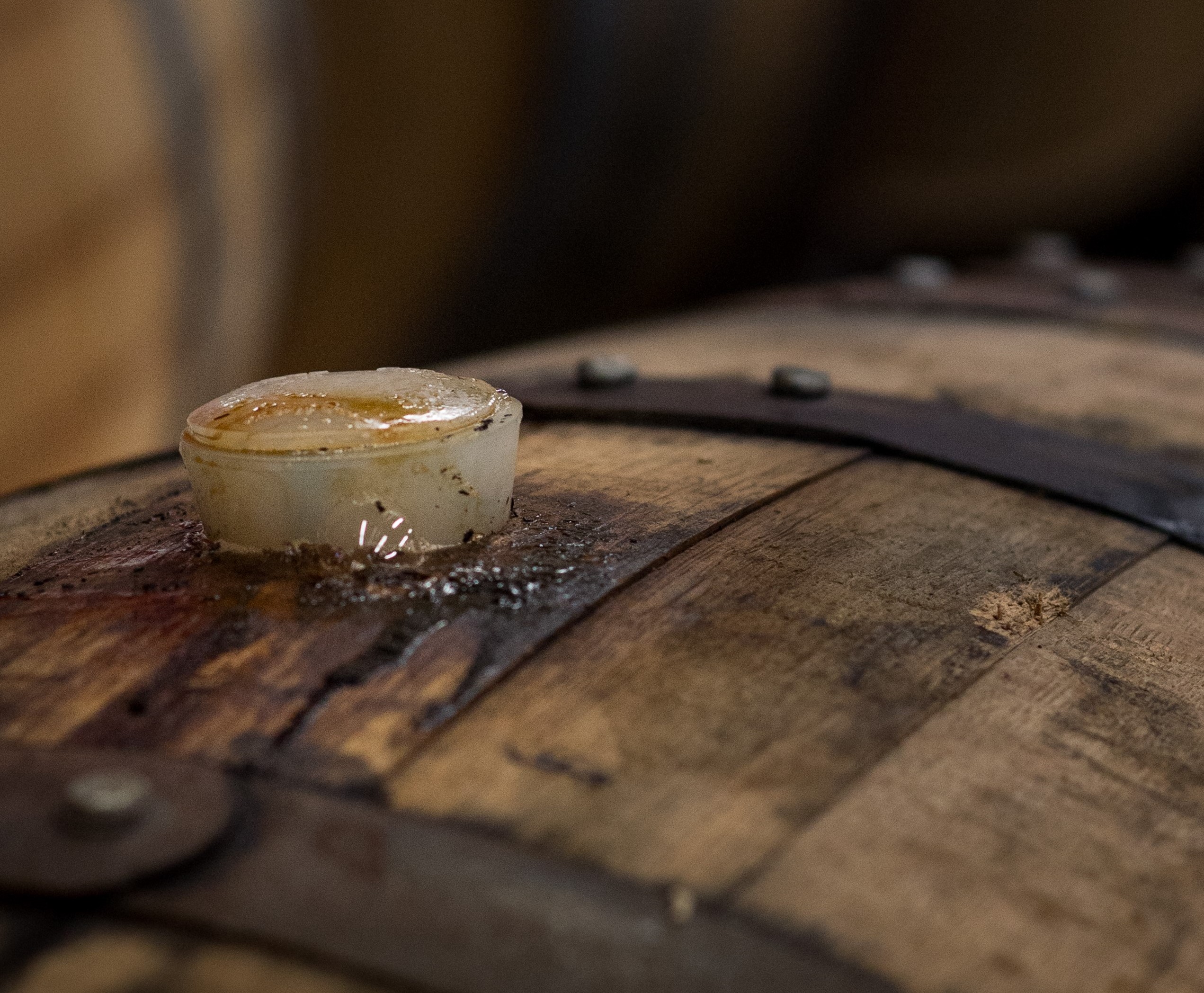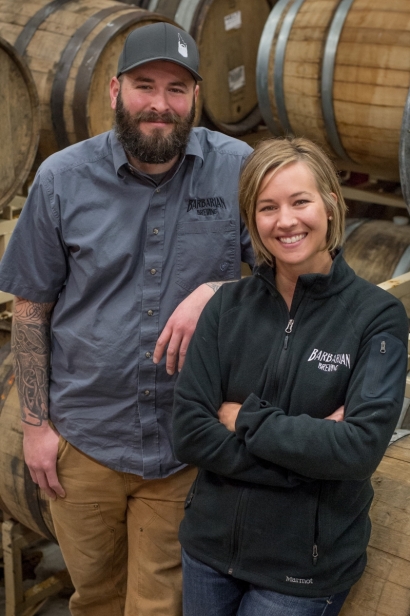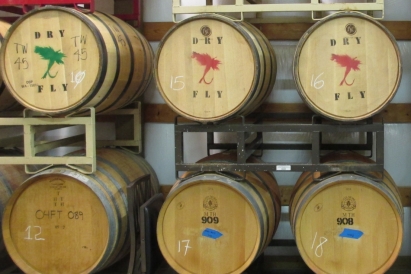Winter Warmers: A sample of barrel-aged beers in Idaho
As the weather cools, palates turn to heavier and more comforting beverages. In the world of craft beers, barrel-aged brews fit the winter season like chestnuts roasting on an open fire.
Barrel-aged beers are those that have been “aged with the intention of imparting the unique character of the wood and/or the flavor of what previously has been in the barrel,” according to the Brewers Association 2016 Beer Style Guidelines. Craft brewers in the U.S. snatch up any type of barrel they can find to impart the flavors of bourbon, wine, port, brandy, rum, tequila or even gin to their beers.
“I never thought I’d be selling used wood to brewers,” said Noah Steingraeber, sales manager at Rocky Mountain Barrels in Colorado. Though Steingraeber says most brewers use a barrel for aging two or three times, some only use it once. “The more you use it, the more prone to infection it can be and also the less flavor profile you get,” he said.
Throughout Idaho, craft brewers are paying homage to the season by releasing their own unique barrel-aged beers. From theTreasure Valley to the Teton Valley, Idaho brewers are producing porters, stouts, cream ales and sours using this time- and capital-intensive method. According to Steingraeber the cost of a used barrel ranges from $99 to $1,250, with most selling for between $169 and $189.
At Barbarian Brewing in Garden City, husband and wife team James Long and BreAnne Hovley specialize in barrel-aged beers and sours. Long’s love for wood-aged brews grew out of a holiday tradition. “Every Christmas, I would make an old ale or something really, really strong,” Long said. “I didn’t have barrels so I started using oak chips and it took off from there.”
As head brewer at Barbarian, Long now uses everything from bourbon barrels to Merlot barrels to 8 Feathers Vanilla Bean whiskey barrels to flavor his creations. Long and Hovley decided to focus on this style of beers after a small business counselor advised them to differentiate their brewery from the 20 or so others in the Treasure Valley. But this model comes with some risks.
“You have to accrue the cost of the barrels and then the ingredients and then you’re sitting on it for six months to two years,” said Long. “It’s a little more capital-heavy in an already capital-heavy venture.”
Hovley added: “And then you run a super-high risk if you have something that you don’t want in a barrel and it goes bad. You have to dump it.”
This winter Barbarian plans to serve three barrel-aged beers on tap: Morrigan, a bourbon barrel aged imperial stout; Elixir of the Gods, a sour Belgian-style quad aged in port barrels with pomegranates; and a still-unnamed bourbon barrel double porter sour.
In North Idaho, Selkirk Abbey Brewing has also created an ambitious barrel program. The brewery sits between I-90 and the Spokane River in a quiet Post Falls business park. With its hanging tapestries, rock-rimmed fireplace and dark oak bar, it’s certainly a place to drink in reverence.
Selkirk Abbey specializes in darker beer varieties. Co-owner Jeff Whitman and his team have been hard at work since summer on a Belgian-style winter brew they’ll call Cuvée de la Nuit Profonde, or Blend of the Deep Night. Inspired by beers likeTrappistes Rochefort 10 made in the Abbey of Notre-Dame de St.-Remy in Rochefort, Belgium, Selkirk Abbey’s Cuvée will be a blend of around 27 different barrelaged brews, of various wine and whiskey origins. Several of these barrels come from Dry Fly Distilling right across the border in Spokane.
When it comes time to choose their Cuvée blend, the Selkirk Abbey team will sip un-carbonated samples from their just-tapped barrels, jotting down notes and passing testers around a table in search of the perfect blended beer for winter drinkers.
Also in Northern Idaho, brewers at Daft Badger Brewing are embarking on a more modest barrel program. Situated a couple of blocks from I-95 in a midtown Coeur d'Alene neighborhood, Daft Badger provides a reprieve from crowded downtown with a light-filled building, covered patio and tall wooden tables.
On tap, Daft Badger features a variety of beers from light ales to dark imperial stouts. The brewery has also been experiementing with barrel aging various stles of beers, including lighter cream ales. Co-owner Jake Capaul explained that with the elusiveness and high cost of quality barrels, they aren't able to make large quantities of these brews, but they love trying new things. For example, they're exploring bourbon and oak infusing techniques, such as soaking French wood chips overnight in Maker's Mark, drying the chips in a smoker and introducing them back to their Josiah's Revenge imperial stout.
"Our goal is not to be the biggest brewery; there are breweries better outfitted for that," said Capaul. "We just want to make beer big in flavor and have people feel at home when they're here.
In Eastern Idaho, Victor's Grand Teton Brewing is continuing its tradition of releasing several barrel-aged brews. According to Max Shafer, grand Teton's cellar master and barrel manager, on track this season are a Flanders-style sour brown ale aged in oak barrels for 16 months; a 2015 vintage of their American Sour, created by blending 26 different barrel-aged beers ranging in age from 8 to 18 months; and a Double Vision Doppelbock aged in Heaven Hill Bourbonbarrels for 10 months. These will be released in bottles as part of Grand Teton's ongoing Brewers Series, but Shafer said they may occasionally be available on draft at their trap room, as well. Other barrel-aged beers that will be available from Grand Teton this season are a dry-hopped Snarling Badger Berliner Weisse and an experimental new pale lager, both aged in oak barrels.
Across Idaho, whether your local craft brewery has a dedicated barrel program or a more modest, experimental one, it's possible they'll have a special brew in back that's aging in a barrel for several months waiting to be tapped and enjoyed this winter.










